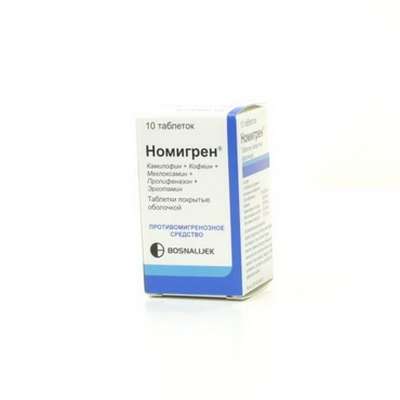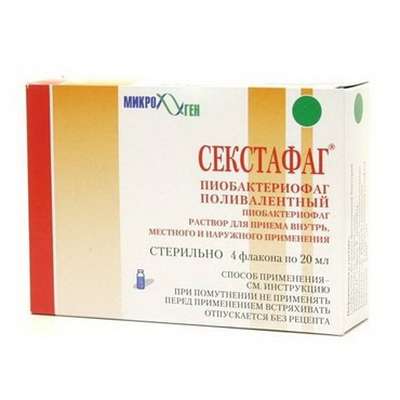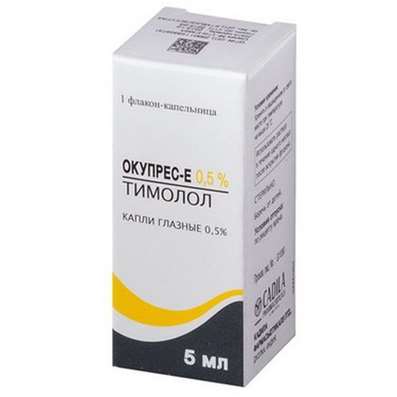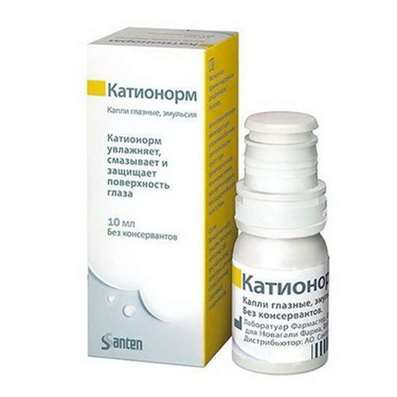Instruction for use: Mivacurium chloride (Mivacurii chloridum)
I want this, give me price
Chemical name
[R [R *, R * - (E)]] 2,2 '- [(1,8-Dioxo-4-octene-1,8-diyl) bis (hydroxy-3,1-propanediyl)] bis [1,2,3,4-tetrahydro-6,7-dimethoxy-2-methyl-1 - [(3,4,5-trimethoxyphenyl) methyl] isoquinolinium dichloride; A mixture of three stereoisomers: trans-trans, cis-trans (92-96%) and cis-cis isomer
Pharmacological group
n Cholinolytics (muscle relaxants)
Nosological classification (ICD-10)
Z100 * CLASS XXII Surgical practice
Abdominal surgery, adenomectomy, Amputation, Coronary angioplasty, Angioplasty of the carotid arteries, Antiseptic skin treatment for wounds, Antiseptic Hand, Appendectomy, atherectomy, Balloon coronary angioplasty, Vaginal hysterectomy, The coronary bypass, Interventions in the vagina and cervix, Interventions on the bladder, Intervention in the mouth, Restoration and reconstructive surgery, Hand hygiene of medical personnel, Gynecologic surgery, Gynecological intervention, Gynecological surgery, Hypovolemic shock during operations, Disinfection of purulent wounds, Disinfection of wounds edges, Diagnostic intervention, Diagnostic procedures, Cervical Diathermocoagulation, Long-surgery, Replacing the fistula catheters, Infection in orthopedic surgery, Artificial heart valve, cystectomy, Short-term outpatient surgery, Short-term operation, Short surgical procedures, Krikotireotomiya, Blood loss during surgery, Bleeding during surgery and in the postoperative period, Kuldotsentez, laser photocoagulation, laser coagulation, retinal laser coagulation, Laparoscopy, Laparoscopy in Gynecology, CSF fistula, Small gynecological operations, Small surgical procedures, Mastectomy and subsequent plastic, mediastinotomy, Microsurgical operations on the ear, Mukogingivalnye operation, suturing, Minor surgery, neurosurgical operation, Immobilization of the eyeball in ophthalmic surgery, testectomy, pancreatectomy, Perikardektomiya, The period of rehabilitation after surgery, The period of, convalescence after surgery, Percutaneous transluminal coronary angioplasty, Pleural thoracentesis, Pneumonia postoperative and posttraumatic, Preparation for surgical procedures, Preparation for surgery, Preparation of the surgeon's hands before surgery, Preparation of the colon for surgical procedures, Postoperative aspiration pneumonia in neurosurgical and thoracic surgery, Postoperative nausea, Postoperative bleeding, postoperative granuloma, postoperative shock, The early postoperative period, myocardial revascularization, Radiectomy, gastric Resection, bowel resection, uterine Resection, liver Resection, enterectomy, Resection of part of the stomach, Reocclusion of the operated vessel, Bonding tissues during surgical procedures, Removal of sutures, Condition after eye surgery, Condition after surgery, Condition after surgery in the nasal cavity, Condition after gastrectomy, Status after resection of the small intestine, Condition after tonsillectomy, Condition after removal of the duodenum, Condition after phlebectomy, Vascular surgery, Splenectomy, Sterilization of surgical instruments, Sterilization of surgical instruments, sternotomy, Dental surgery, Dental intervention in periodontal tissues, strumectomy, Tonsillectomy, Thoracic surgery, total gastrectomy, Transdermal intravascular coronary angioplasty, Transurethral resection, Turbinektomiya, Removal of a tooth, cataract surgery, Removal of cysts, tonsillectomy, Removal of fibroids, Removing the mobile primary teeth, Removing polyps, Removing broken tooth, Removal of the uterus body, Removal of sutures, Urethrotomy, Fistula likvoroprovodyaschih ways, Frontoetmoidogaymorotomiya, Surgical infection, Surgical treatment of chronic limb ulcersm, Surgery, The surgery in the anal area, The surgery on the colon, Surgical practice, The surgical procedure, Surgical interventions, Surgery on the gastrointestinal tract, Surgical procedures on the urinary tract, Surgical procedures on the urinary system, Surgical intervention of the genitourinary system, Surgical procedures on the heart, Surgical manipulation, surgery, Surgery on the veins, Surgical intervention, Vascular surgery, Surgical treatment of thrombosis, cholecystectomy, Partial gastric resection, transabdominal hysterectomy, Percutaneous transluminal coronary angioplasty, Percutaneous transluminal angioplasty, Coronary artery bypass, tooth Extirpation, Extirpation of milk teeth, pulpectomy, pulsative cardiopulmonary bypass, tooth Extraction, teeth Extraction, cataract extraction, Electrocoagulation, endourological intervention, episiotomy, Etmoidotomiya, Complications after tooth extraction
Z40 Prophylactic surgical intervention
Inhalation anesthesia, Intratracheal Intubation, Intubation of the trachea, Surface anesthesia in ophthalmology
Code CAS
106861-44-3
Characteristics of the substance Miwakuriya chloride
Non-depolarizing short-acting muscle relaxant.
Pharmacology
Pharmacological action - miorelaksiruyuschee, nedepolyarizuyuschee, n-holinoliticheskoe.
Competing with acetylcholine for nicotine-sensitive cholinergic receptors in skeletal muscles. Causes a short-term reversible blockade of neuromuscular transmission.
It causes relaxation of skeletal muscles, incl. Respiratory, does not affect the consciousness and threshold of pain sensitivity. Causes the release of histamine, especially when rapidly administering large doses. Influences the cardiovascular system, lowers blood pressure and increases heart rate. The most important for neuromuscular blockade are trans-trans and cis-trans stereoisomers. The distribution volume for trans-trans, cis-trans and cis-cis stereoisomers is 0.15; 0.27 and 0.31 l / kg, and the total Cl is 63, 106 and 4.6 ml / kg / min, respectively. Plasma is subjected to enzymatic hydrolysis with the participation of cholinesterase plasma with the formation of quaternary alcohol and quaternary monoester. Biotransformation can be significantly slowed down in patients with abnormal or decreased cholinesterase activity, especially in homozygous for the atypical cholinesterase gene. It is excreted by the kidneys and liver in the form of inactive metabolites. T1 / 2, respectively, 2,3; 2.1 and 55 minutes for trans-trans, cis-trans and cis-cis stereoisomers, but the latter has only one tenth of the activity of the other two isomers in the development of the neuromuscular block and despite prolonged T1 / 2 does not violate the properties of the mixture.
The average effective dose, causing a miorelaxation of 95% - 0.07 mg / kg. The effect develops within 2-2.5 minutes after iv injection of 0.15-0.25 mg / kg. The time to achieve the maximum effect depends on the dose and age of the patient and is: in adults - 2.3-4.9 minutes with doses in the range of 0.1-0.25 mg / kg, in children - 1.6-2.8 Min at doses of 0.11-0.25 mg / kg, in patients with terminal hepatic and renal insufficiency 2.1-2.6 min after administration of 0.15 mg / kg, in patients older than 68 years - 4.8 Min after administration of 0.1 mg / kg. Intubation is possible after 2.5-3 minutes after the administration of 0.15 mg / kg in 5-15 seconds and 2-2.5 minutes after the introduction of 0.2 mg / kg for 30 seconds. Clinically, the duration of the action is 2-3 times less than that of atrakury and vekuronia, and 2-2.5 times longer than the duration of succinylcholine.
The duration of the effect at a dose of 0.15 mg / kg is 16 minutes, with a dose of 0.2-0.25 mg / kg - 20-23 min in adult patients. The recovery time of neuromuscular conduction is half that of any muscle relaxant of average duration of action, does not depend on the dose or duration of infusion. Repeated administration of maintenance doses for 2.5 hours does not lead to the development of tachyphylaxis, the cumulation of the effect or the change in spontaneous recovery time of the neuromuscular transmission. The introduction of anticholinesterase agents reduces the recovery time by 5-6 minutes.
Pharmacokinetics does not depend on the function of the liver and kidneys. However, with renal insufficiency, the duration of the action of the myovacary can increase; The level and activity of pseudocholinesterase decreases.
Indications
Relaxation of skeletal muscles during general anesthesia, to facilitate intubation of the trachea and mechanical ventilation.
Contraindications
Hypersensitivity, homozygous for the gene of atypical cholinesterase.
Restrictions on the use
Use with caution in conditions accompanied by a decrease in plasma cholinesterase activity (burns, malignant neoplasms, dehydration, hypokalemia, anemia, impaired liver function, pregnancy, use of neurotoxic insecticides), cardiovascular diseases, familial periodic myoplegia, myasthenia gravis, neuromuscular diseases, Hypothermia, obesity. Age up to 2 months (no sufficient clinical experience).
pregnancy and lactation
Perhaps, if the expected effect during application exceeds the potential risk to the fetus and the baby. Adequate and strictly controlled studies in pregnant women are not carried out, there is no information on the penetration into breast milk.
In animal experiments, teratogenic or embryotoxic effects were not observed with the use of maximal subparalytic doses.
Side effects
From the nervous system and sensory organs: dizziness (<1%).
From the cardiovascular system and blood (hematopoiesis, hemostasis): hot flashes (16%), hypotension (<1%), tachycardia (<1%), bradycardia (<1%), arrhythmia (<1%).
On the part of the respiratory system: bronchospasm (<1%), hypoxemia (<1%).
From the skin: rash (<1%), erythema (<1%), urticaria (<1%).
Other: muscle spasm (<1%).
Interaction
Strengthen and / or extend neuromuscular blockade inhalation anesthetics (enflurane, isoflurane, halothane), aminoglycosides, polymyxins, tetracyclines, lincomycin, clindamycin, propranolol, calcium antagonists, lidocaine, procainamide, quinidine, furosemide, thiazide diuretics, mannitol, magnesium salts, Lithium, ketamine, acetazolamide, trimetaphane, D-penicillamine, chlorpromazine, pancuronium bromide, hexamethonium, opioid analgesics, agents that decrease plasma cholinesterase activity (metoclopramide, oral contraceptives, antimitotics, organophosphorus compounds, anticholinesterase agents, MAO inhibitors). Weaken the effect of anticholinesterase drugs and drugs that have n-cholinomimetic activity, bambuterol; Possible resistance to long-term use of phenytoin and carbamazepine.
Overdose
Symptoms: prolonged paralysis of muscles, excessive decrease in blood pressure.
Treatment: maintenance of adequate ventilation of the lungs until recovery of neuromuscular conduction; Specific therapy: anticholinesterase drugs (for example, neostigmine methyl sulfate 0.03-0.064 mg / kg) are administered after the onset of spontaneous reduction simultaneously with anticholinergics (atropine). Antagonists (neostigmine methyl sulfate, etc.) should not be used with a full neuromuscular block (peripheral neurostimulation is recommended to confirm recovery). It is necessary to carry out mechanical ventilation until the breathing is fully restored.
Routes of administration
In / in.
Precautions Use only if intubation of the trachea and ventilation is possible.
In children, the blocking effect occurs earlier, the clinically effective block is less prolonged, and spontaneous recovery occurs faster than in adults. In patients with decreased cholinesterase activity, the duration of the effect is increased. Side effects associated with the release of histamine are dose-dependent and are more frequent when administered rapidly at high doses of 0.2 mg / kg or more, their frequency decreases when administered for 30-60 seconds or in 2 stages.
Against the background of cardiovascular pathology, hypersensitivity to histamine, hypovolemia, the initial dose should be administered slowly (within 60 s). In patients with terminal stage of hepatic and renal insufficiency, with myasthenia and cachexia dosage is selected individually. With obesity (an increase in body weight by 30% or more), the dose is determined in relation to the ideal body weight. Do not combine with depolarizing muscle relaxants and mix in one syringe with high alkaline solutions (barbiturates).

 Cart
Cart





